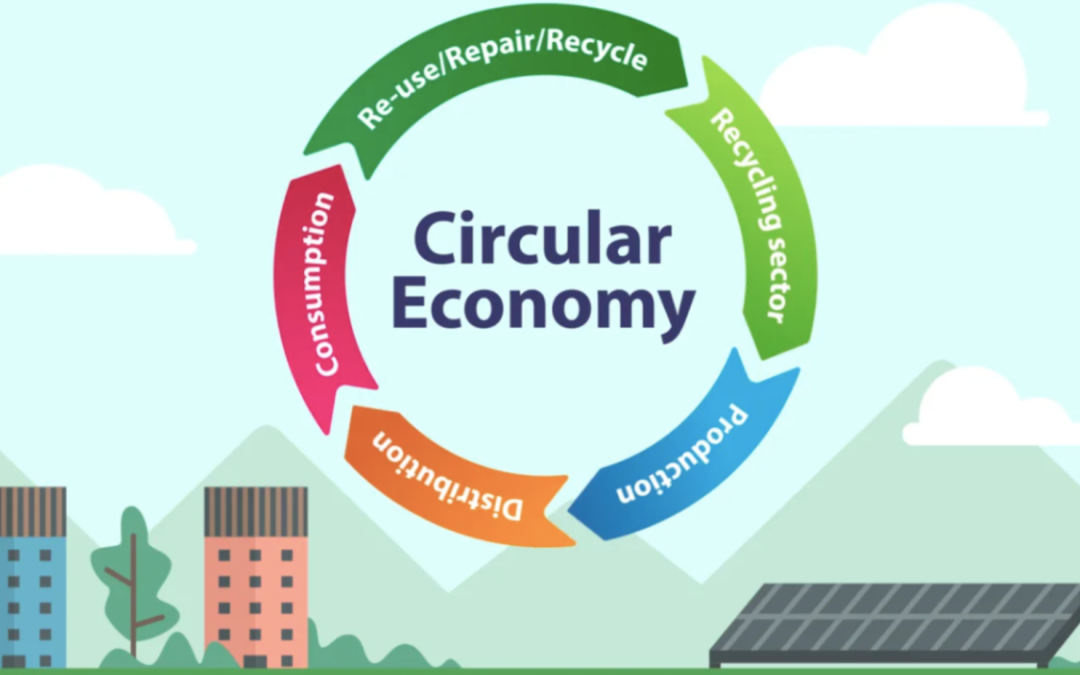What is circular economy?
Circular economy (CE) is a model of production and consumption that strives to use materials wisely and eliminate waste. In contrast with a linear economic model of “take-make-waste,” in which society extracts raw resources, uses them to produce and use goods and services and then discards vast amounts of waste, CE establishes a more sustainable production and consumption model. The essence of CE is to keep raw materials in production cycles as long as possible, either as biological or technical inputs. By designing products to be reused, repaired and remanufactured, waste and pollution can be prevented from the outset.
As the Ellen MacArthur Foundation describes, CE strives to make the most of the material resources available by:
- Eliminating waste and pollution
- Circulating products and materials (at their highest value)
- Regenerating nature
These general aims are supported by applying the following principles:
Why is CE Important?
Humanity has used up a third of nature’s resources. In other words, if Earth’s history is compared to a calendar year, modern human life has existed for 37-minutes, and we have used one third of Earth’s natural resources in the last 0.2 seconds.[1] That amounts to 1.75 planets, with Canada and other wealthy countries using far more per capita than most other countries. Indeed, if everyone on the planet lived like Canadians, we would need 5 Earths to sustain the current level of consumption and waste generation[2]. Clearly, there is a need to bring our existence into step with the limits and function of our one and only planet Earth. By imitating nature, where everything has value and nothing is wasted, balance can be restored.
Not only will this protect the environment (by reducing emissions, waste, and consumption of natural resources) – and our future – CE can benefit the economy, produce jobs and increase energy and material autonomy, such that local economies are less dependent on imported raw materials.
What can communities do?
As detailed in the Circularity Gap Report, there are numerous steps communities can take to move to a circular economy, and in the process achieve tremendous economic, social, and environmental benefits. The report identifies 21 circular solutions for every business, city and nation, such as:
- Slash unnecessary consumption
- Embrace a plant-based diet
- Support local
- Design flexible, multi-purpose homes
- Adopt nature-based solutions
The benefits of adopting these actions and the others included in the report are reduced carbon emissions and pollution, and more social interaction, skills development and jobs that collectively make communities more attractive and liveable.
What is WCS Engagement + Planning doing to advance CE?
WCS Engagement + Planning is currently leading a team to help the District of Squamish update their Zero Waste Strategy, which will guide the District’s ongoing transition towards zero waste and a circular economy. We also bring in circular economy thinking and strategies as broader local economic development and community sustainability strategies in all the work we do.
Contact:
To learn more about our Zero Waste work in Squamish and Whistler, and how we can help your community achieve its Zero Waste goals, contact Cheeying Ho (cho[at]whistlercentre.ca]
[1] The World Counts (2022): https://www.theworldcounts.com/challenges/planet-earth/state-of-the-planet/overuse-of-resources-on-earth
[2] UNICEF (2022): https://www.newswire.ca/news-releases/canada-would-require-five-earths-to-sustain-its-current-resource-consumption-destroying-children-s-environments-globally-unicef-canada-837631313.html



